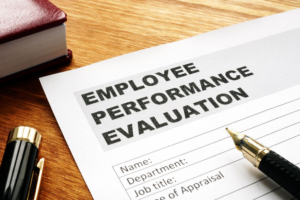Managing Employee Performance – It’s Not About the Forms

This blog is the first in a series focusing on the topic of “Managing Employee Performance”. This is a hot topic with many organizations because for many organizations, the process often creates more problems than it solves.
Research indicates that many organizations have chosen to abandon what they describe as the “annual performance appraisal” process because of the problems it seems to create. This blog will address some of the key challenges faced by organizations in managing employee performance.
Understand the purpose of managing employee performance
The first step in organization’s need to better manage employee performance is to understand the purpose of the process. The primary purpose should not be focused on filling out forms or creating a perception that a documented, numerical rating is the main driver of compensation. Rather, it should be focused on helping employees succeed in delivering on accountabilities that are aligned with organizational objectives. When the process focuses on the completion of forms, it becomes a paper chase where managers often do not feel responsible or accountable for the process and the potential value it can bring.
Similarly, if the process focuses on compensation, it often devolves into a focus on the “annual performance appraisal” meeting. This is where managers and employees seem to debate a performance rating because it is so closely connected to how much of a pay increase an employee will receive. Even the language of describing the annual meeting as a “performance appraisal” is problematic because managers should not be “appraising” performance on an annual basis. They should be appraising performance on an ongoing basis – every day or at least every week. To get the most value out of a performance management process, organizations need to ensure that it’s not about the forms, it’s about the conversations that help an employee succeed.
Employee Success
The entire performance management process should be focused on helping employees succeed. The definition of employee success combines achievement of the organization’s expectations that have been communicated to them as well as the achievement of the goals and expectations that employees have set for themselves. It is important to note that documentation of performance is important and there is nothing wrong with connecting pay with performance. Having said that, the key is to focus on conversations that help success.
The documentation and compensation are by-products of quality conversations and quality performance assessments as opposed to being the main focus. A key opportunity for many organizations is to shift the internal mindset and the focus of the system and language relating to managing employee performance. For some organizations, the first step in shifting the mindset may be as simple as changing their language from “annual performance appraisals” to “annual performance reviews”. This ensures that managers understand that feedback is an ongoing process and the annual meeting is a review – sort of like a highlight reel – that focuses on performance feedback that has already been shared with the employee.
These review meetings can take place more frequently than once a year, however the purpose is still to review the collective dialogue that is taken place during the performance review period.
It’s Not About the Forms
If an organization focuses its attention on equipping managers to engage in regular dialogue with employees, they will be much more likely to achieve the objective of helping employees succeed. Also, by focusing on regular dialogue, the organization will reinforce that the process is not about the forms.
The forms that organizations use as part of their employee performance management process should assist the manager in capturing an overview of the ongoing performance feedback discussions that the manager has had with the employee. These discussions will focus on the employee achieving their full potential by offering reinforcement of desired behaviours and constructive analysis of what needs to be corrected. The forms can offer a process for capturing performance feedback throughout the year in order to avoid issues such as the recency bias. The forms can also be used to hold managers accountable for their performance assessments in order to reduce or eliminate other forms of rater bias.
Once the organization has embraced that the purpose of managing employee performance is to help employees succeed in meeting their accountabilities, the execution of the process will improve. Subsequent blogs will address each of the component parts of an effective program for managing employee performance.
As always, I welcome your feedback. You can connect with me via email or telephone or leave a comment right here on the site.
Until next time,
Dave







Leave a Reply
Want to join the discussion?Feel free to contribute!